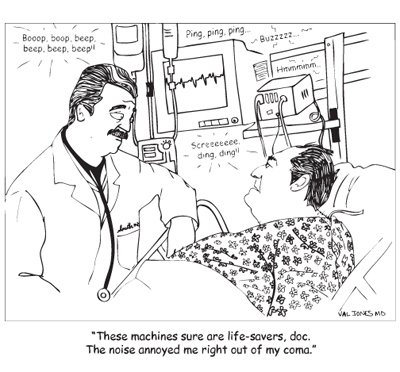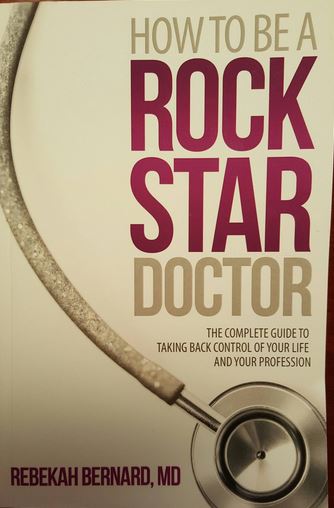December 23rd, 2009 by Medgadget in Announcements, Better Health Network
No Comments »

 A year and a half ago we unveiled Medpolitics, a website for doctors to blog about the legislative, regulatory, and public policy issues revolving around the business of medicine.
A year and a half ago we unveiled Medpolitics, a website for doctors to blog about the legislative, regulatory, and public policy issues revolving around the business of medicine.
Today we’d like to present the new and much improved Medpolitics, that anyone can join and participate in using the new, more intuitive and much spiffier interface. Whether you are a health care strategist, doctor, nurse, patient, or just a citizen concerned about the state of medicine, this is the place for you to bring up debates, offer solutions, announce events, organize groups, or find friends and establish professional contacts.
Healthcare is obviously a major topic today in society, and we feel that there should be a real forum for everyone to express their views, offer new ideas, and discuss details that are often ignored by all the noise in the media. Medpolitics allows anyone to blog, post videos from YouTube, and create discussion forums by topic.
If the future of healthcare is important to you, this network will be an ideal outlet for expressing your individual voice. Registration takes seconds and you can start right away.
Link: Medpolitics.com…

*This blog post was originally published at Medgadget*
December 22nd, 2009 by Medgadget in Better Health Network, Medical Art, News
1 Comment »

 Keeping hands clean in the hospital is a bit more complicated and much more important thing to do than doing it at home. Nosocomial organisms can easily jump from clinician to clinician to patient via faucet handles and soap dispensers. Miscea B.V., out of Augsburg, Germany, won this year’s red dot best of the best design award for its MISCEA touch-free faucet.
Keeping hands clean in the hospital is a bit more complicated and much more important thing to do than doing it at home. Nosocomial organisms can easily jump from clinician to clinician to patient via faucet handles and soap dispensers. Miscea B.V., out of Augsburg, Germany, won this year’s red dot best of the best design award for its MISCEA touch-free faucet.
The touch-free operation concept of this innovative, clear and aesthetically designed hygiene system allows users to choose between water, soap and disinfectant with just one hand, thus preventing causative organisms from being accidentally transmitted and causing new infections. Operation of this faucet is self-explanatory and comfortable; choosing soap or disinfectant is interactively guided: a softly pulsating LED indicates whether the system is ready for use and each dispensing mode is accompanied by a light impulse. The design of this hygiene system thus merges a high degree of comfort with a maximum reduction of cross-contamination risk. Read more »
*This blog post was originally published at Medgadget*
December 17th, 2009 by Medgadget in Better Health Network, News, Research
No Comments »

 Touch Bionics, a company out of Livingston, UK and Hilliard, Ohio known for its i-LIMB device, is making available a new finger prosthesis system. ProDigits, a customizable platform that can be adapted to the needs of individual patients, provides electronically powered artificial fingers that can grasp and manipulate objects. The new hand can also be used for more advanced tasks such as typing on a keyboard. Read more »
Touch Bionics, a company out of Livingston, UK and Hilliard, Ohio known for its i-LIMB device, is making available a new finger prosthesis system. ProDigits, a customizable platform that can be adapted to the needs of individual patients, provides electronically powered artificial fingers that can grasp and manipulate objects. The new hand can also be used for more advanced tasks such as typing on a keyboard. Read more »
*This blog post was originally published at Medgadget*
December 7th, 2009 by Medgadget in Better Health Network, News
No Comments »

 Contrary to common misconceptions, real cases of amnesia are extremely rare. But Henry Gustav Molaison (known as patient H.M.) was subject of a radical experimental brain surgery in 1953 in an attempt to treat his epileptic seizures following which he was not able to form new memories. About a year ago, Mr Molaison passed away but left to science his fascinating brain which is currently being dissected at the University of California San Diego Brain Observatory. The researchers in charge of the project have setup a live video feed with an open invitation to anyone interested in viewing the slicing to join in the fun. Read more »
Contrary to common misconceptions, real cases of amnesia are extremely rare. But Henry Gustav Molaison (known as patient H.M.) was subject of a radical experimental brain surgery in 1953 in an attempt to treat his epileptic seizures following which he was not able to form new memories. About a year ago, Mr Molaison passed away but left to science his fascinating brain which is currently being dissected at the University of California San Diego Brain Observatory. The researchers in charge of the project have setup a live video feed with an open invitation to anyone interested in viewing the slicing to join in the fun. Read more »
*This blog post was originally published at Medgadget*
December 1st, 2009 by Medgadget in Better Health Network, News
No Comments »

 Remedium Technologies won first prize in the Most Promising Security Idea category of the Global Security Challenge 2009 for their shaving cream-like foam that can stop bleeding. The foam incorporates chitosan, a natural low-cost hemostatic substance derived from shellfish. It is designed to be sprayed into wounds where it expands and adheres to tissues in order to slow or stop bleeding. The company is also working on a novel chitosan-based wound dressing which uses “nano-hooks” in order to better adhere to bleeding tissues. Read more »
Remedium Technologies won first prize in the Most Promising Security Idea category of the Global Security Challenge 2009 for their shaving cream-like foam that can stop bleeding. The foam incorporates chitosan, a natural low-cost hemostatic substance derived from shellfish. It is designed to be sprayed into wounds where it expands and adheres to tissues in order to slow or stop bleeding. The company is also working on a novel chitosan-based wound dressing which uses “nano-hooks” in order to better adhere to bleeding tissues. Read more »
*This blog post was originally published at Medgadget*
 A year and a half ago we unveiled Medpolitics, a website for doctors to blog about the legislative, regulatory, and public policy issues revolving around the business of medicine.
A year and a half ago we unveiled Medpolitics, a website for doctors to blog about the legislative, regulatory, and public policy issues revolving around the business of medicine.


 Keeping hands clean in the hospital is a bit more complicated and much more important thing to do than doing it at home. Nosocomial organisms can easily jump from clinician to clinician to patient via faucet handles and soap dispensers. Miscea B.V., out of Augsburg, Germany, won this year’s red dot best of the best design award for its MISCEA touch-free faucet.
Keeping hands clean in the hospital is a bit more complicated and much more important thing to do than doing it at home. Nosocomial organisms can easily jump from clinician to clinician to patient via faucet handles and soap dispensers. Miscea B.V., out of Augsburg, Germany, won this year’s red dot best of the best design award for its MISCEA touch-free faucet. Touch Bionics, a company out of Livingston, UK and Hilliard, Ohio known for its
Touch Bionics, a company out of Livingston, UK and Hilliard, Ohio known for its  Contrary to common misconceptions, real cases of amnesia are extremely rare. But Henry Gustav Molaison (known as patient H.M.) was subject of a radical experimental brain surgery in 1953 in an attempt to treat his epileptic seizures following which he was not able to form new memories. About a year ago, Mr Molaison passed away but left to science his fascinating brain which is currently being dissected at the University of California San Diego Brain Observatory. The researchers in charge of the project have setup a live video feed with an open invitation to anyone interested in viewing the slicing to join in the fun.
Contrary to common misconceptions, real cases of amnesia are extremely rare. But Henry Gustav Molaison (known as patient H.M.) was subject of a radical experimental brain surgery in 1953 in an attempt to treat his epileptic seizures following which he was not able to form new memories. About a year ago, Mr Molaison passed away but left to science his fascinating brain which is currently being dissected at the University of California San Diego Brain Observatory. The researchers in charge of the project have setup a live video feed with an open invitation to anyone interested in viewing the slicing to join in the fun. 








